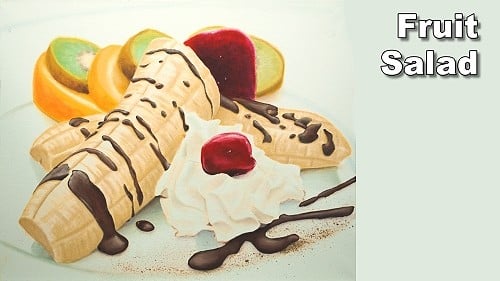Class Description
Bring sweetness to your canvas in this juicy still life painting class where we capture a beautifully plated fruit salad in realistic detail. From soft bananas to shiny cherries and rich chocolate sauce, this lesson is a feast for both the eyes and your artistic skills.
Whether you’re aiming to improve your realism or want to explore food as a still life subject, this class will guide you step by step through painting textures, reflections, and subtle focus shifts that add life and believability to your work.
In This Lesson You Will Learn:
🎨 How to paint oranges and kiwi fruit that appear out of focus in the background
🍌 How to render realistic bananas with depth and natural skin texture
🍫 How to paint glossy chocolate that looks rich and delicious
🍒 How to paint whipped cream with soft, airy volume
✨ How to add highlights to make cherries look juicy and reflective
Sharpen Your Realism Techniques:
This class focuses on helping you build your confidence with food textures, light reflections, and how to subtly direct the viewer’s eye using depth of field and soft focus tricks.
Perfect for Intermediate Artists:
If you’re comfortable with basic painting techniques and are ready to take your realism to the next level, this still life lesson is the perfect next step.
Join now and learn how to turn a simple fruit salad into a mouth-watering masterpiece!
You Will Need
- 16″x20″ (500mm x400mm) Canvas or similar
- These paints: Titanium White, Crimson, Cadmium Red, Cadmium Orange, Cadmium Yellow, Yellow Ochre, French Ultramarine, Burnt Sienna, Raw Umber
- Set of bristle brushes
- 2″ (5cm) Pastry / Hardware brush
- 1/4″ (1cm) Soft filbert brush
- Painting medium
- Rigger brush
- Fine liners
